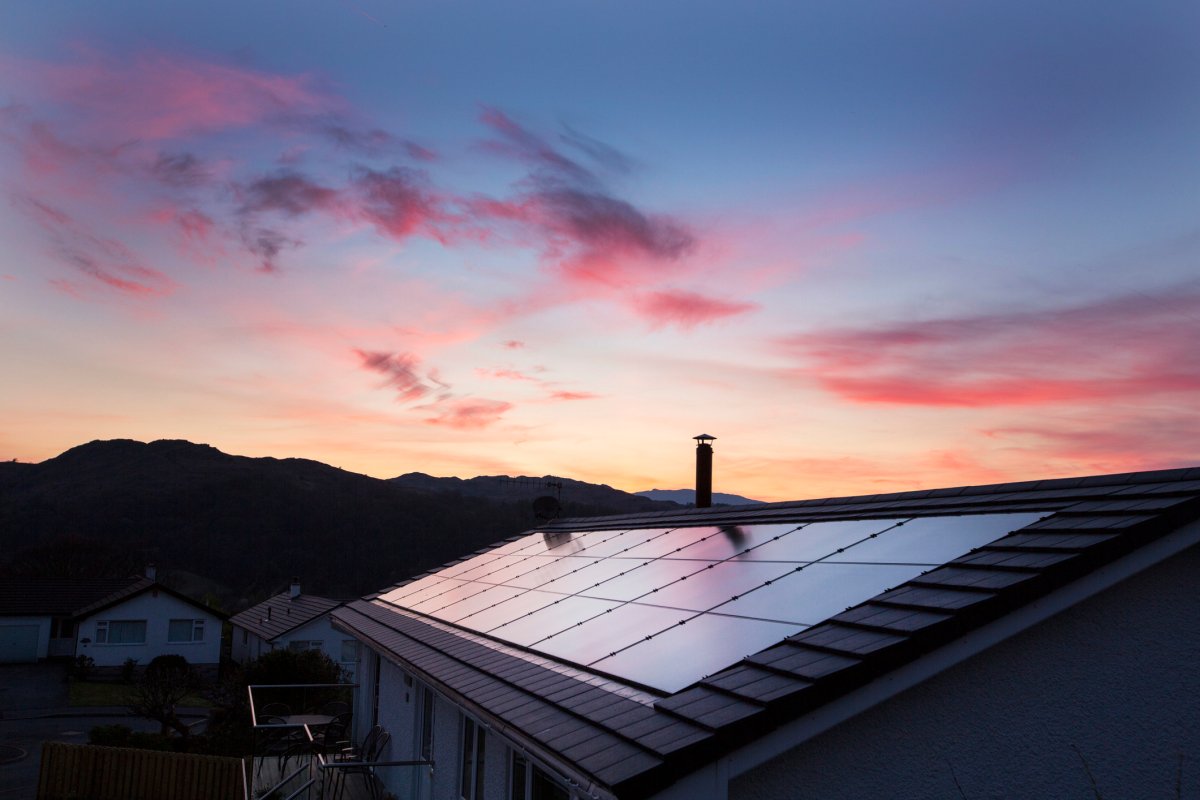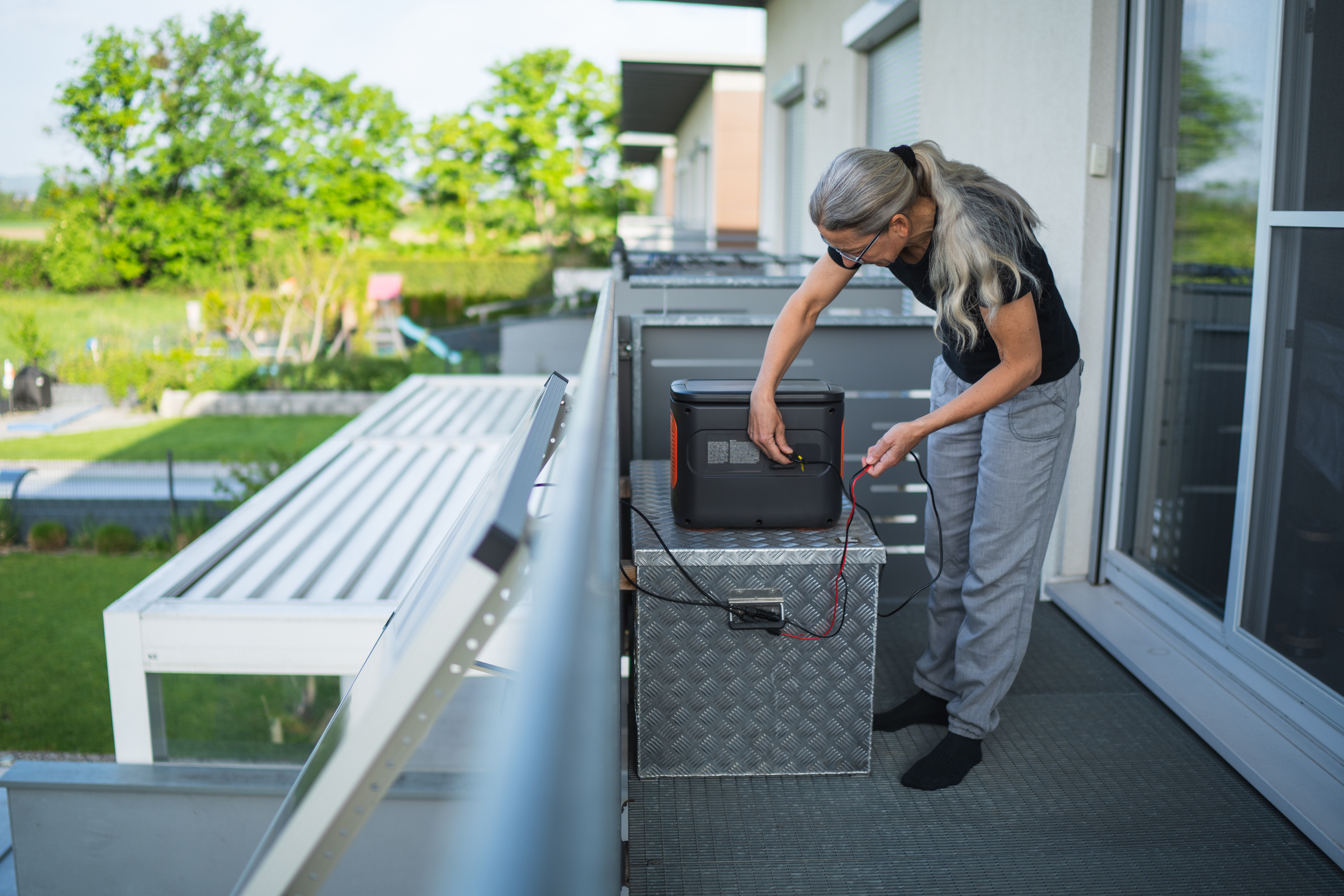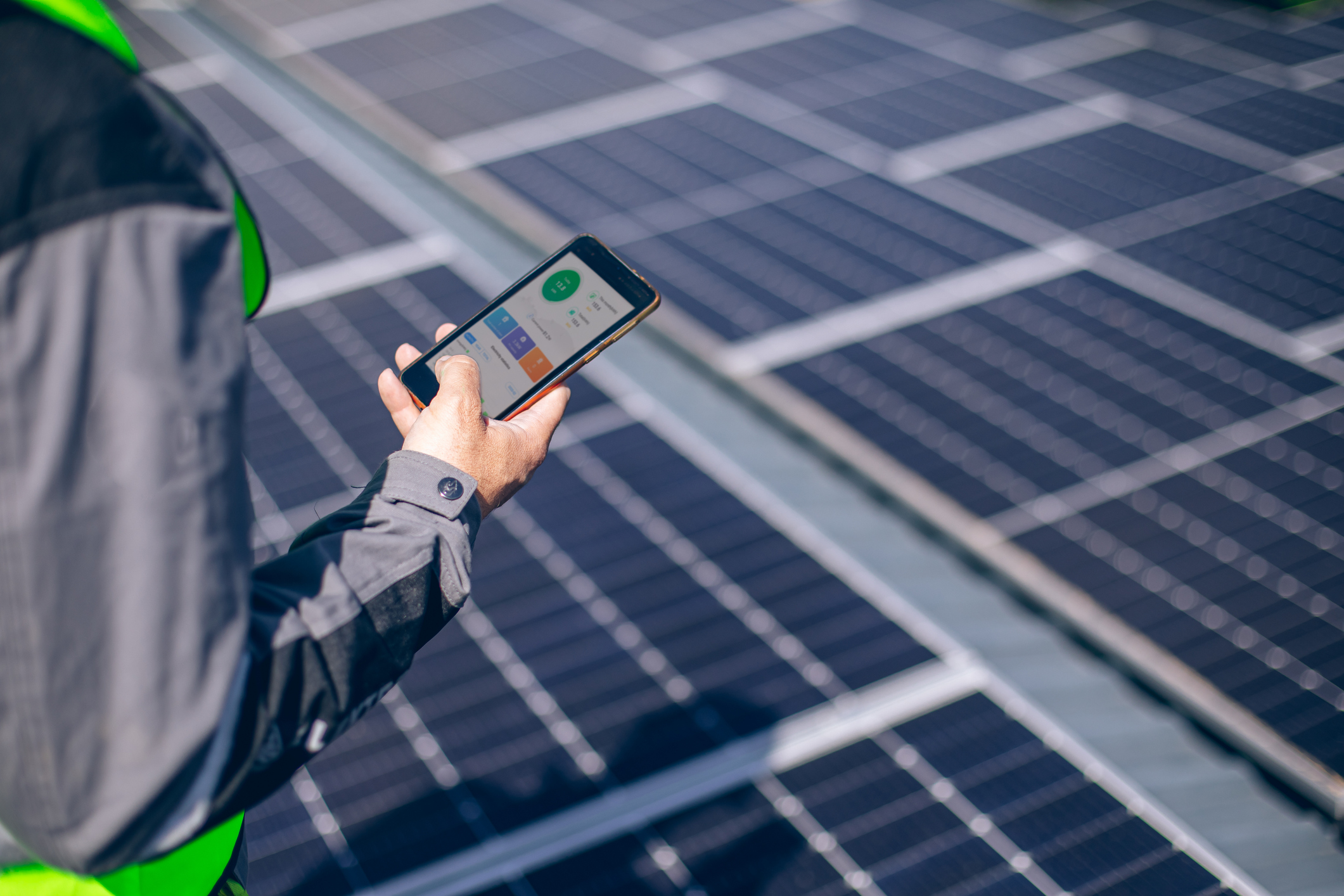

We may earn revenue from the products available on this page and participate in affiliate programs. Learn More ›
As more people experience extreme weather events that knock out power, the demand for home backup generators is booming. Homeowners experienced 16 percent more power disruptions in 2022 than in 2013, according to the most recent data from the U.S. Energy Information Administration. And those power outages can last more than a day at a time, putting a strain on daily living.
While backup generators provide convenience and peace of mind, the problem with more generators running, especially during periods of record heat and lengthy power outages, is the pollution they create. Various factors are driving the increase in demand for more sustainable options to muscle through a power outage, particularly solar backup generators.
What are solar backup generators and how do they work?
By definition, a solar generator, also called a photovoltaic (PV) generator, harnesses the energy of the sun to produce electricity. Solar generators consist of solar panels, an inverter, a solar panel battery, and a battery charger. In essence, the inverter absorbs the energy and converts it from DC power to AC power so that appliances, electronics, lights, and air conditioning units can continue functioning.
Since they are available in different sizes, solar backup generators can power from just one appliance to an entire house. Portable solar backup generators are particularly attractive since they are lightweight, compact, and often designed with handles and wheels to move them around easily to where they’re most needed. However, they offer limited wattage capacity and might not be able to power multiple devices at once.
Whole-house solar generators, also called standby solar generators, can power an entire home and seamlessly keep the electricity on, even when the grid isn’t functioning properly. They provide sufficient home battery backup power to turn on lights, televisions, computers, and small- to mid-size appliances. Typically, it takes less than 48 hours to charge a solar backup generator to full capacity, but the time can vary depending on the size of the solar panels and the amount of sunlight available. Whole-house generators are more expensive and need to be installed by a pro.

Why solar generators can be a better option than fuel-based power.
When shopping for a generator, you’ll notice numerous options available. Yet generators fueled by gasoline, diesel, propane, and natural gas are less energy-efficient and produce more pollution than solar models. Plus, fuel costs can get pricey, but sunlight is free.
Although buying a solar backup generator might require more up-front investment than a traditional generator costs, over time you are likely to save money compared to using other types of generators. As for other advantages, solar backup generators are quieter, safer, and odorless; require minimal maintenance; and increase energy independence from fossil fuels.
What is driving the current demand for solar backup generators?
From dealing with hurricanes to ice storms, more people are looking for ways to keep the lights on during a blackout that are both sustainable and reliable. The global solar generator market size was valued at about $551 million in 2023 and is projected to grow to more than $1 billion by 2032, according to Fortune Business Insights.
Here are the main reasons for this shift:
Technological advances: Improved battery technology is making it possible to produce solar generators that are more compact, portable, efficient, and reliable for home use. Continued innovation is expected in the years to come.
Lower price tag. As the cost of solar panels comes down, it is becoming more affordable to purchase and operate a solar backup generator.
Government influence: Government policies supporting solar technology, such as tax credits, subsidies, and Renewable Portfolio Standards (RPS), help stimulate investment and growth in the market and make solar energy more accessible to homeowners.
Smart-home integration: Solar generators are designed to integrate with energy-efficient smart-home automation systems, which more Americans are seeking.
Climate change concerns: As more people experience the effects of climate change due to extreme weather events, they place more attention on solutions. Not only will more people need to rely on backup power, but they also recognize how the choices they make can impact the overall problem.

How to choose the best solar generator for your home.
Not sure how to choose the best solar backup generator? Start with key elements like your budget, intended use, portability, how much equipment you hope to power during an outage, and the size of your home to determine the amount of wattage you will need, expressed in watt-hours (Wh).
In general, a small, portable solar generator (500 Wh and 1000 Wh) can power some key appliances for about 5 hours. A medium generator (1000 to 2000 Wh) has enough capacity to back up the entire home temporarily. Finally, a large generator (3000 Wh and larger) is a great option to power an entire house for a longer time.
Finally, consider brand reputation, read reviews, and ask about warranty coverage and installation fees.
